The use of potassium humate for cucumbers
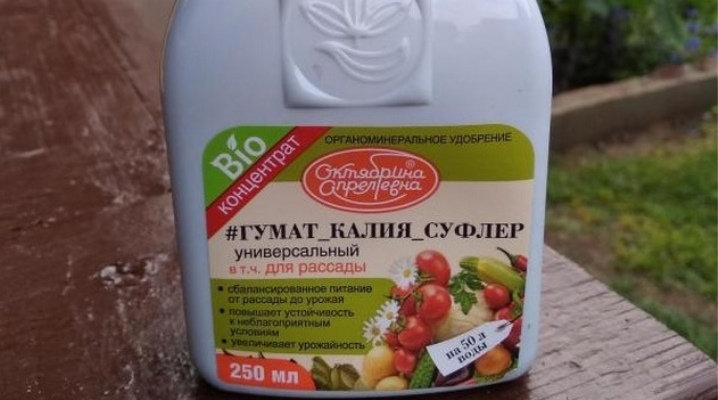
Growing any crop for consumption, the farmer strives to ensure that the harvest is as large as possible, and the costs of cultivating it are as low as possible. It is extremely difficult to achieve good results when growing cucumbers without additional additives, therefore the use of potassium humate is a universal means of achieving the desired result. It is important to know the features of the process, the proportions and methods of correct fertilization of the soil.
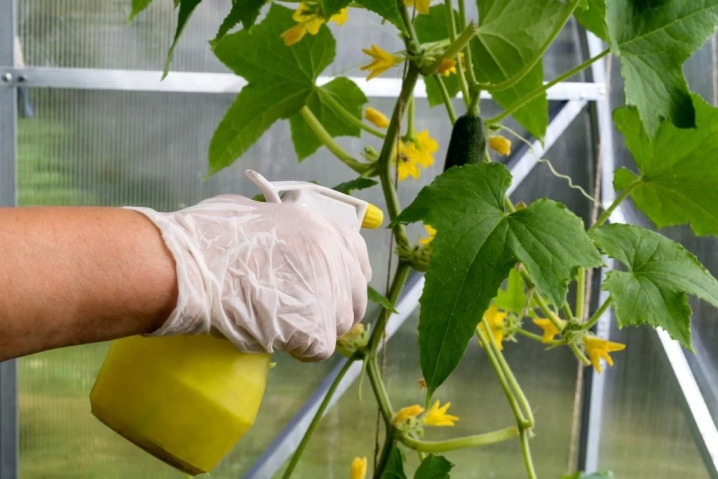
What it is?
Humates are additives that carry a lot of positive properties, especially in the process of growing crops. Upon contact with the soil, they are capable of:
-
prevent poisons and heavy metals from entering the ground;
-
increase the amount of nutrients in the soil;
-
to intensify the growth of culture;
-
change the color of the earth to a darker one, which contributes to more intense warming by the sun;
-
improve the quality and quantity of the crop.

There are two types of humate: liquid and powder. The liquid variety is the most sought after. It has a dark brown hue, in the composition - 80% humate, as well as succinic, fulvic acid and potassium.
This additive significantly stimulates the growth of crops and is very easy to use. To cultivate the soil, it is necessary to add the required amount of the substance to the water, stir it, then water the area with the culture with it.
Potassium humate powder helps plants grow and develop. This fertilizer allows:
-
strengthen the root system, stimulating its growth;
-
reduce at least 2 times the amount of nitrate substances;
-
accelerate the maturation of the culture;
-
strengthen the health of green growth, protect against disease;
-
raise the amount of vitamins, chlorophyll and other components that contribute to the proper growth and development of green crops.
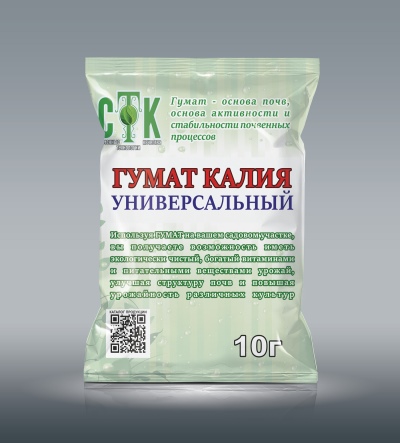
Powder fertilizer is also convenient to use as it can be easily dissolved in water before spreading into the soil.
Potassium humate can be used for most garden crops, most often it is used for growing tomatoes, peppers and cucumbers.
Frequency and timing of feeding
Summer residents in the process of caring for the garden often use various fertilizers. Knowing about the positive qualities of such additives, the timing of their introduction and the amount, you can significantly increase the ripeness of the fruits and strengthen the culture itself. As for cucumbers, this vegetable is in demand at any time of the year, therefore it is important to be able to fertilize it correctly.
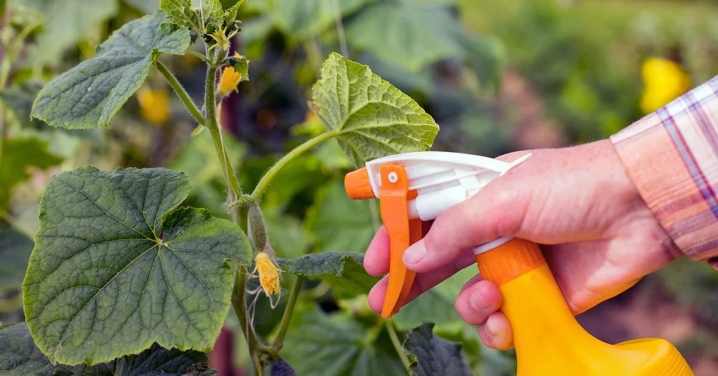
Depending on the place of germination, the amount of potassium humate additives will vary. During the growth of the culture in a greenhouse, you need to feed them three times, and in an open bed, this procedure should be increased up to 6 times.
The amount of nutrients should depend on the nutritional value of the soil - if it is fertile, then more than 2 times to add additives is not required.
The processing of cucumbers with sodium humate can be carried out both under the roots and on the green part of the bush. For the root system, a solution is diluted, and the soil is poured, and fertilizer is sprayed on the foliage. If the work with this additive is carried out for the first time, and you are not sure of the result, it is worth adding the composition under one bush, and looking at the effect - if after a week there is no obvious progress in growth, then the effect is minimal.
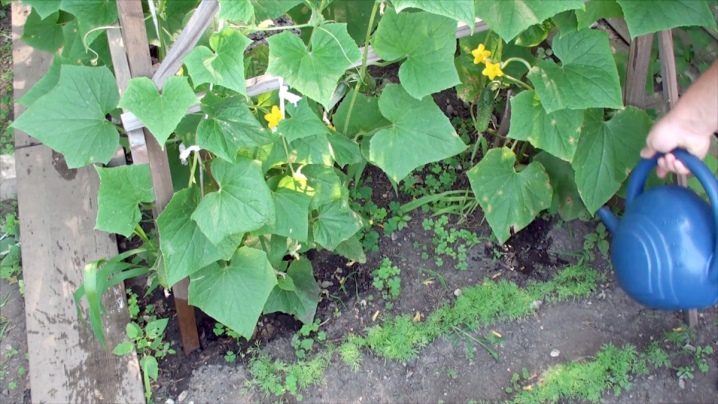
In order not to fertilize too often, it is important to know at what time it is recommended to carry out this procedure. The first contact of potassium humate with the culture occurs at the seed stage, after which the additive is added when the sprout and the first leaves appear. During budding, it is recommended to process the crop by spraying. The same method is also suitable during flowering and fruiting of cucumbers.
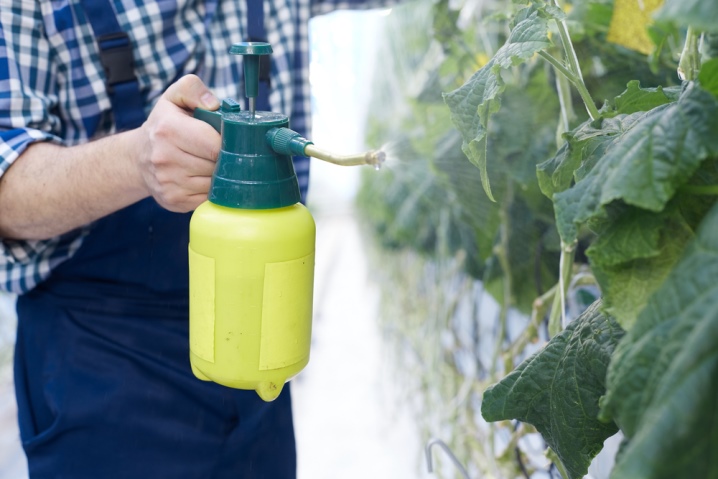
The timing of feeding depends on the soil in which the cucumbers grow. It is recommended to add potassium humate every 2-4 weeks. The manufacturer usually indicates the processing time with the composition and the amount of the substance that must be used for fertilization.
How to prepare?
To treat seedlings with potassium humate, you need to know the exact proportions of the components, since they will be different for different crops. To dilute fertilizer for cucumbers, you need to know that at different stages the amount of substance will differ.
In the process of soaking the seeds, it is necessary to dilute 1/3 teaspoon of the substance in a liter of water. When the seedlings grow up, and it becomes necessary to fertilize it, then 10 liters of water are prepared, in which 1 tablespoon of potassium humate is diluted. The spray solution has different dilution proportions - here you need to add 1 teaspoon of fertilizer to 10 liters of water.

It is very important to properly dilute the solution of this fertilizer, and use it at the appointed time. Otherwise, there is a danger of getting the opposite effect. Using overly concentrated additives causes cucumbers to grow more slowly, become painful, and yield poor harvests.
Too frequent feeding can lead to the accumulation of harmful substances, which is dangerous to human health.
To soak the seeds, you can also use powdered potassium humate, which will require half a gram of this substance, which is diluted in 0.5 liters of water. In this composition, the seeds should stay for 2 days. If the cuttings are soaked, then the optimal period for them will be 14 hours in the solution. To spray foliage, you need to use 3 grams of the composition, diluted in 10 liters of water. It is worth letting the fertilizer dissolve well so as not to clog the sprayer hole marks.
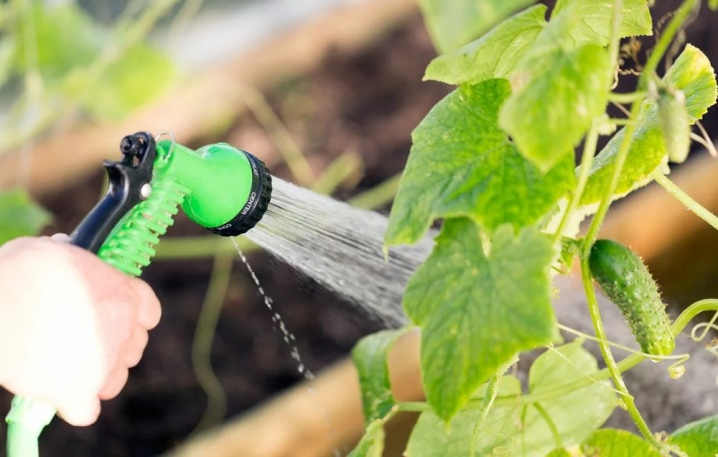
To cultivate the soil on which cucumbers grow, it is necessary to prepare a solution of 10 liters of water and a tablespoon of potassium humate. Fertilizer is applied intermittently: the first feeding is carried out at the stage of the beginning of the growth and development of the culture, and later - every 10-15 days. Initially, it is worth pouring in half a liter under each bush and, with each next application, increase the amount of additives, eventually bringing them to one liter per crop.
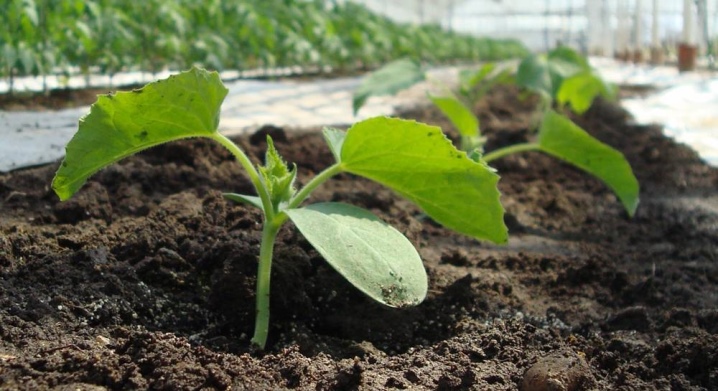
How to apply?
The use of potassium humate allows you to strengthen the culture, make it stronger, more hardy and productive. Cucumbers can be fed with potassium humate, protecting them from harmful substances, increasing resistance to disease and increasing crop yields. To get strong and healthy shrubs, it is important to properly fertilize the plants. The packages of potassium humate always have instructions for use, according to which you can calculate the amount of powder or liquid composition in a certain period of cucumber development in order to dilute them in the required amount of water.
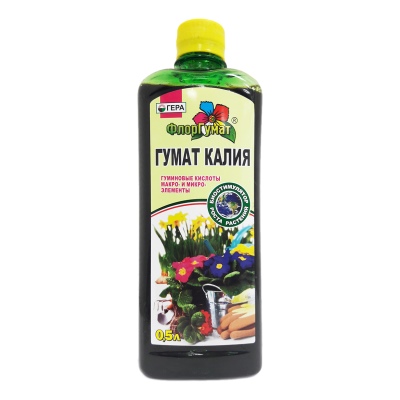
You need to use this fertilizer cyclically, taking breaks so that there is not too much accumulation of potassium humate, otherwise the effect will be the opposite. When planting seedlings, it is important to immediately fertilize the soil, repeat this procedure when the buds begin to set, as well as in the process of flowering and fruiting.
In order to choose the right root dressing and spraying, it is important to know that it is worth watering the soil in the warm season, when the ground is warmed up well, and the roots can actively grow. It is best to feed the cucumbers after rain or watering, in the late afternoon.
It is better to sprinkle the foliage in cool, non-sunny weather, when the roots cannot fully receive all the nutrients, and the green part, on the contrary, will cope well with this task.
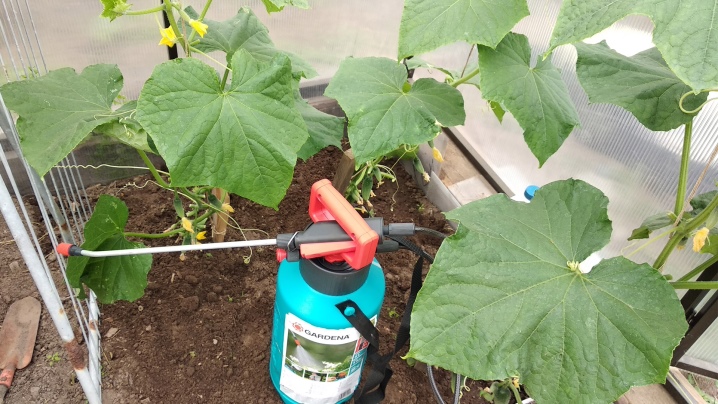
Foliar dressing is recommended at the stages when the cucumbers have already grown into a full-fledged bush and are preparing for bud ovary, flowering and are in the process of fruiting. Leaf processing allows you not to trample the beds, leaving the roots intact, without injuring the bushes themselves. It is important to carry out this procedure in the correct weather and time of day. If you process cucumbers during the day on a hot day, then the foliage will burn out in the sun, all the bushes will disappear, and you should not wait for the harvest. The optimal time will be earlier in the morning or evening, when the sun's rays are no longer so active and will not scorch the foliage.
In the open field
To process cucumbers in an open bed, you need to know the main timing of fertilization:
-
15 days after disembarkation;
-
when the bush begins to bloom;
-
during fruiting;
-
after harvest to stimulate a longer fruiting period.
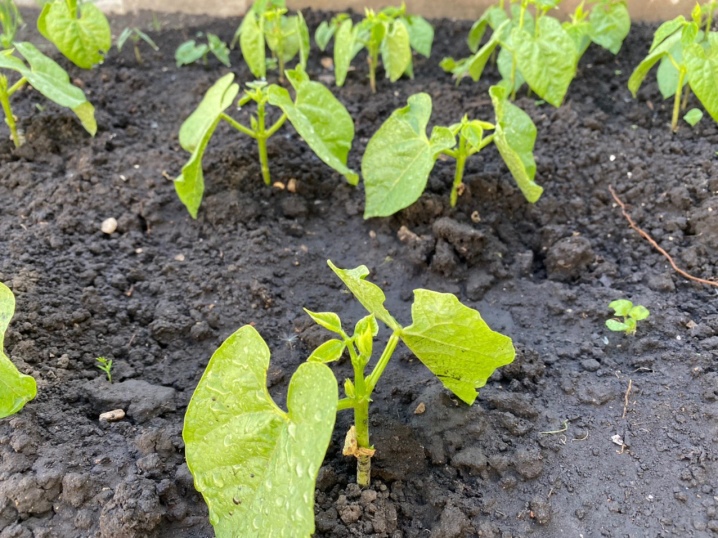
Spraying is carried out on already adult plants and in the event that the soil is too dense, and fertilizers do not pass into it well, and water can also stagnate, which leads to the appearance of fungi and other diseases. It is worth applying fertilizers monthly, focusing on the condition of the plant and soil.
In the greenhouse
When grown in a greenhouse, cucumbers are most often planted as seedlings. The first feeding is carried out during the planting of the crop, the second - during the flowering period, the third - during fruiting. More than 3 applications of potassium humate into the greenhouse soil is not required, since it is usually well fertilized and does not require additional components.
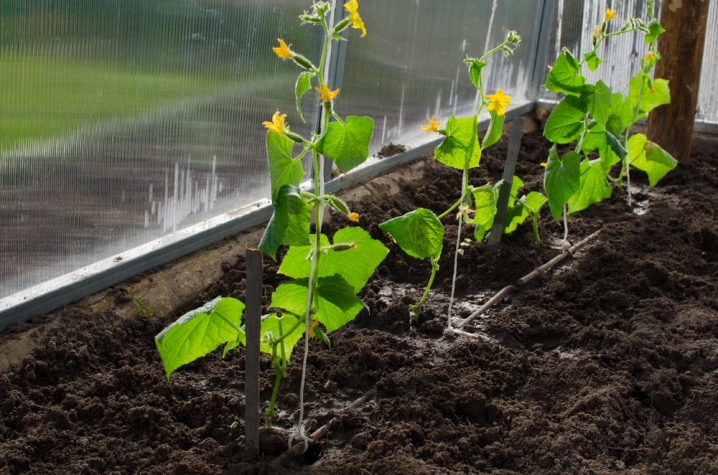
The method of adding additives will be chosen depending on the temperature conditions and lighting. If it is warm and light, you can pour it under the root, if it is cool and little light, it is better to spray. In uncomfortable conditions for a plant, you should not make a solution with a full concentration of the substance; it is better to slightly reduce the amount of potassium humate.
Precautionary measures
Potassium humate is not dangerous, but when working with it, you should adhere to certain rules:
-
storage conditions must correspond to those declared by the manufacturer;
-
do not leave the liquid solution in a place where children can come into contact with it;
-
wear gloves during work so that the composition does not come into contact with the skin;
-
if the solution gets on the skin, wash it with soap and water;
-
if the substance gets on the mucous membranes, rinse them well with water;
-
Dispose of empty containers with household waste.
Subject to the general rules of use, working with potassium humate will not cause any difficulties and discomfort, and the harvest will delight you with its abundance and taste.














The comment was sent successfully.